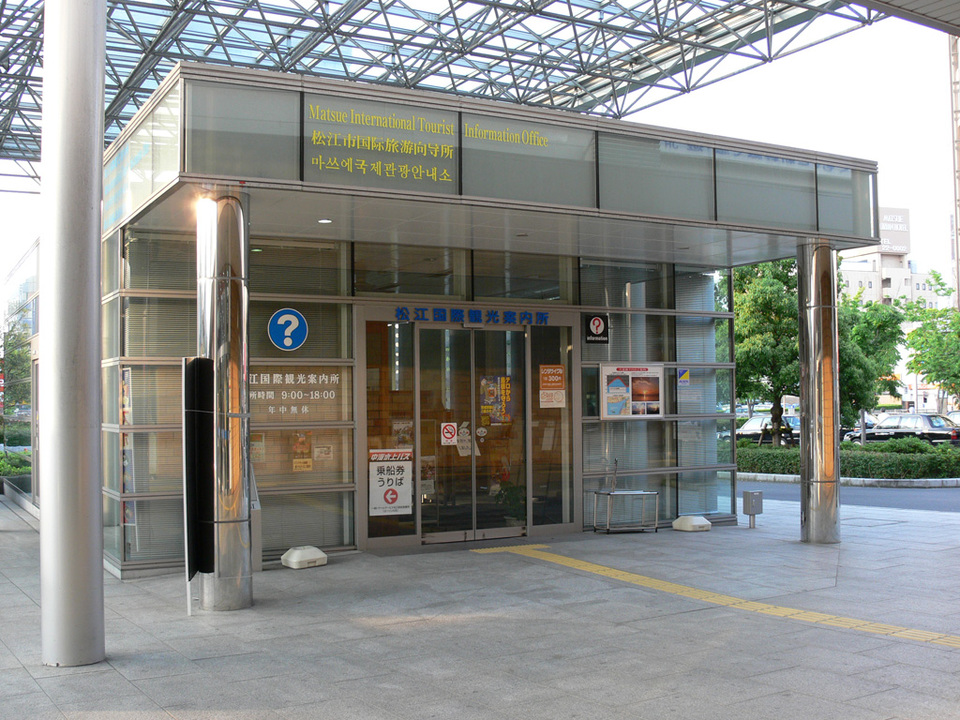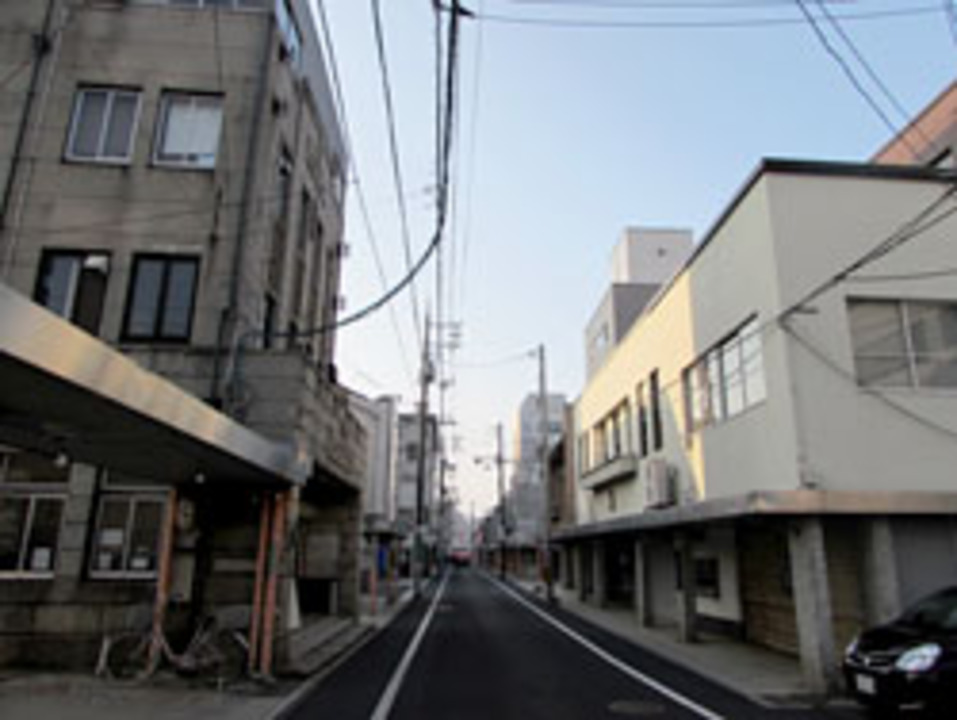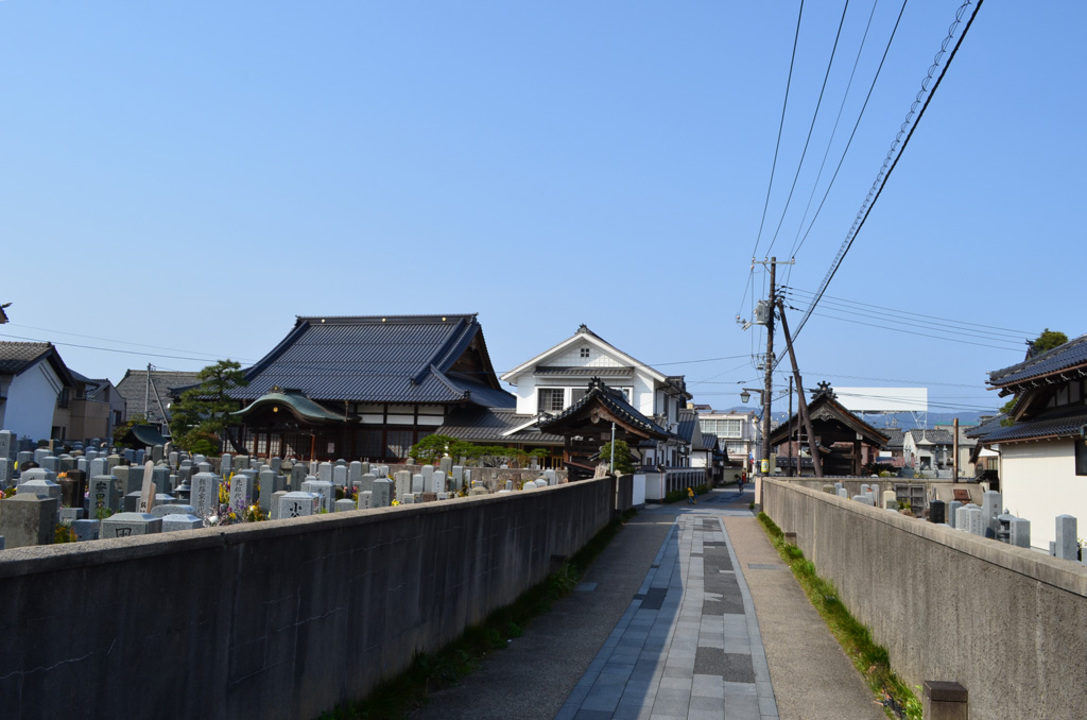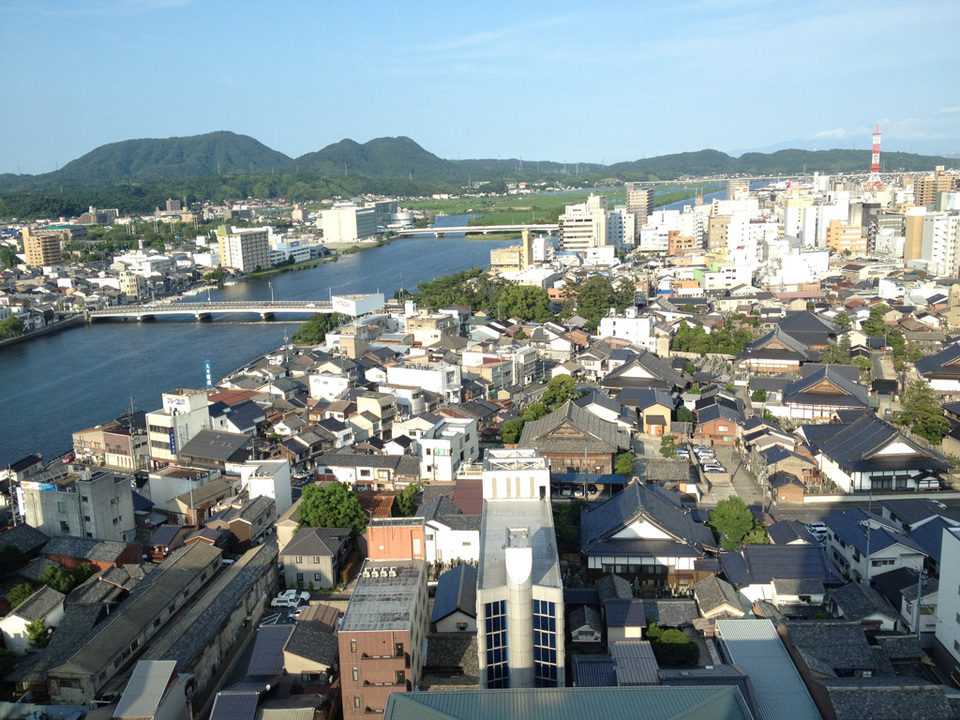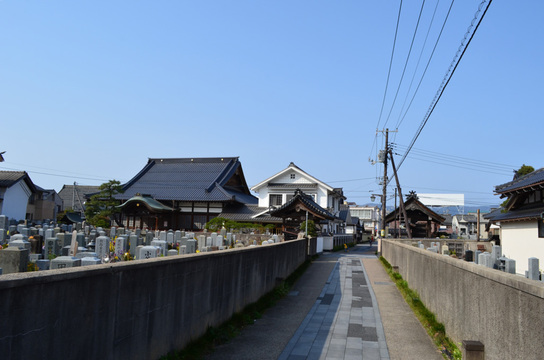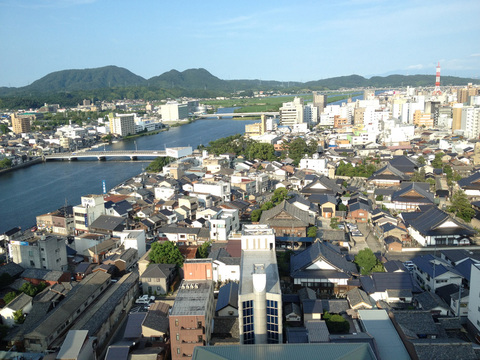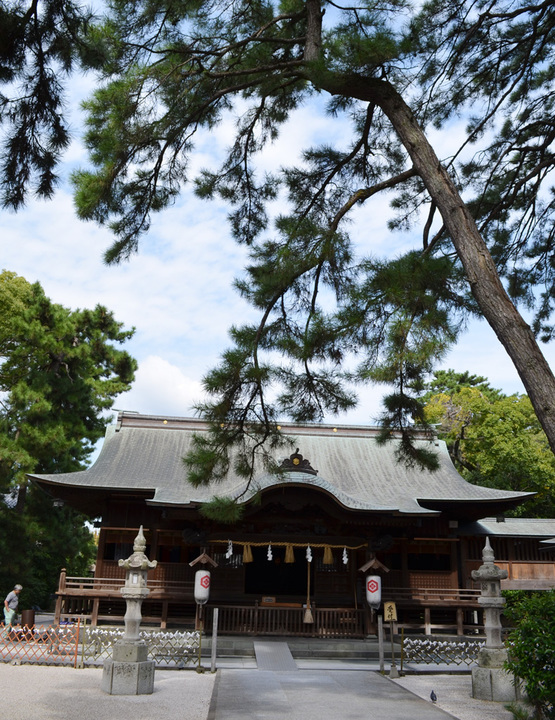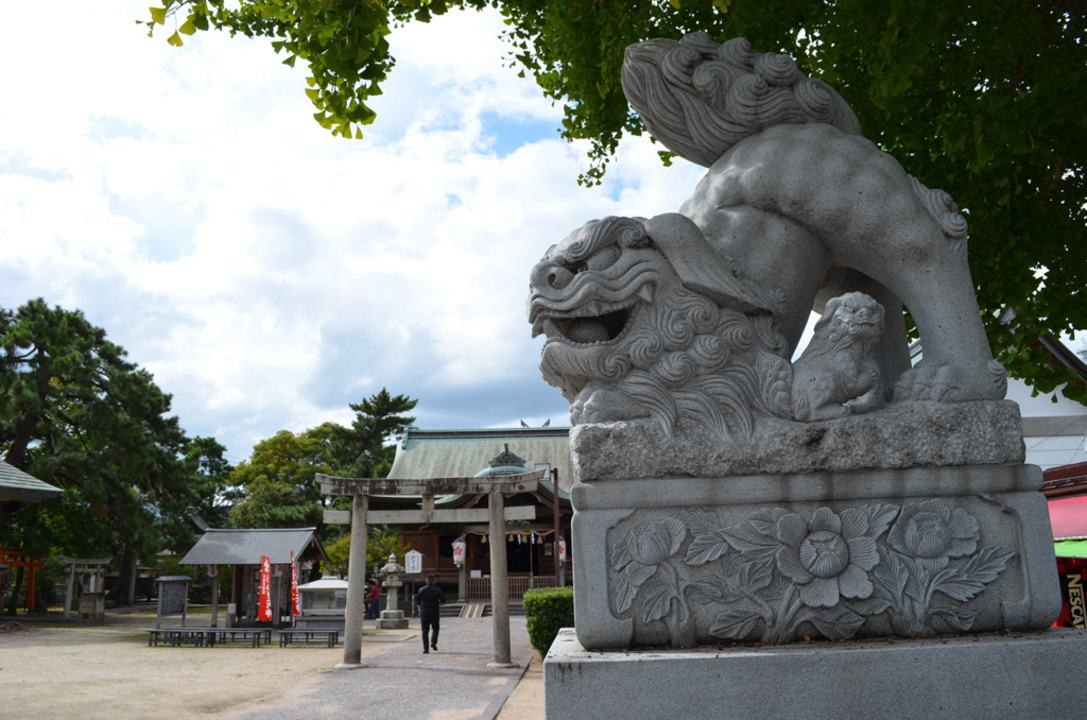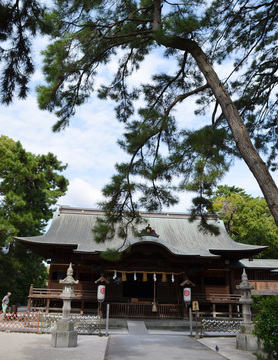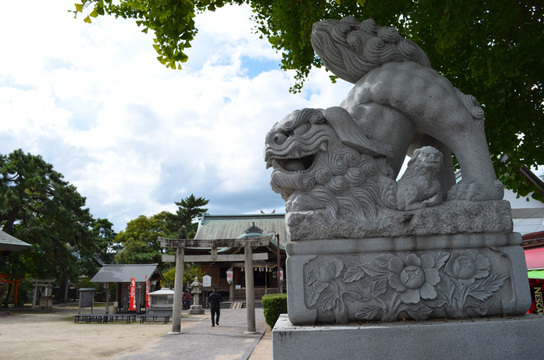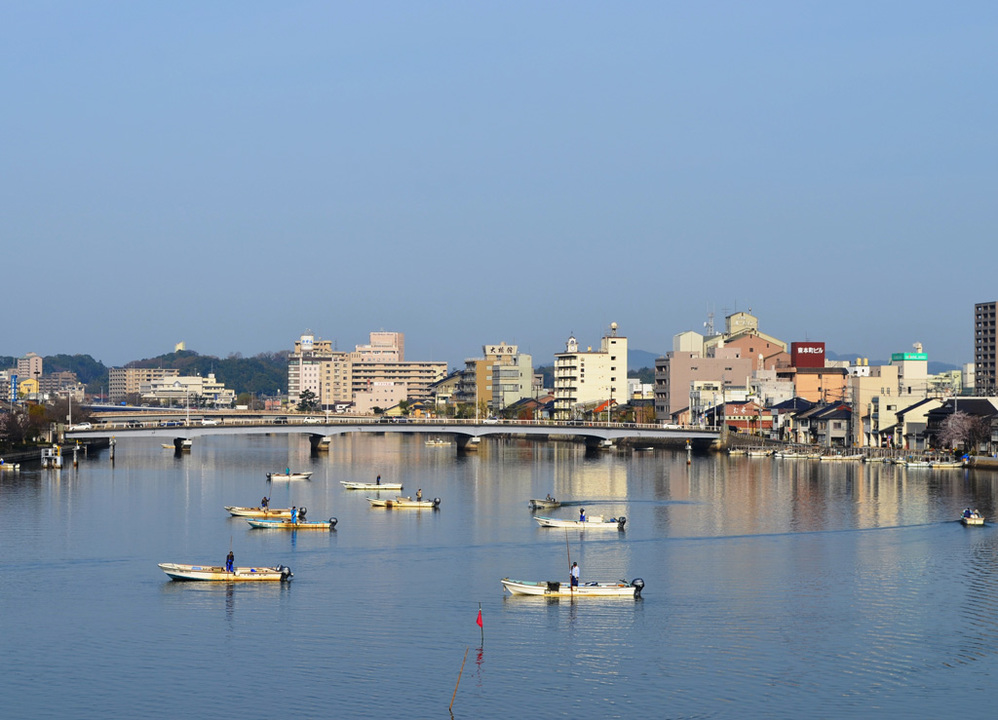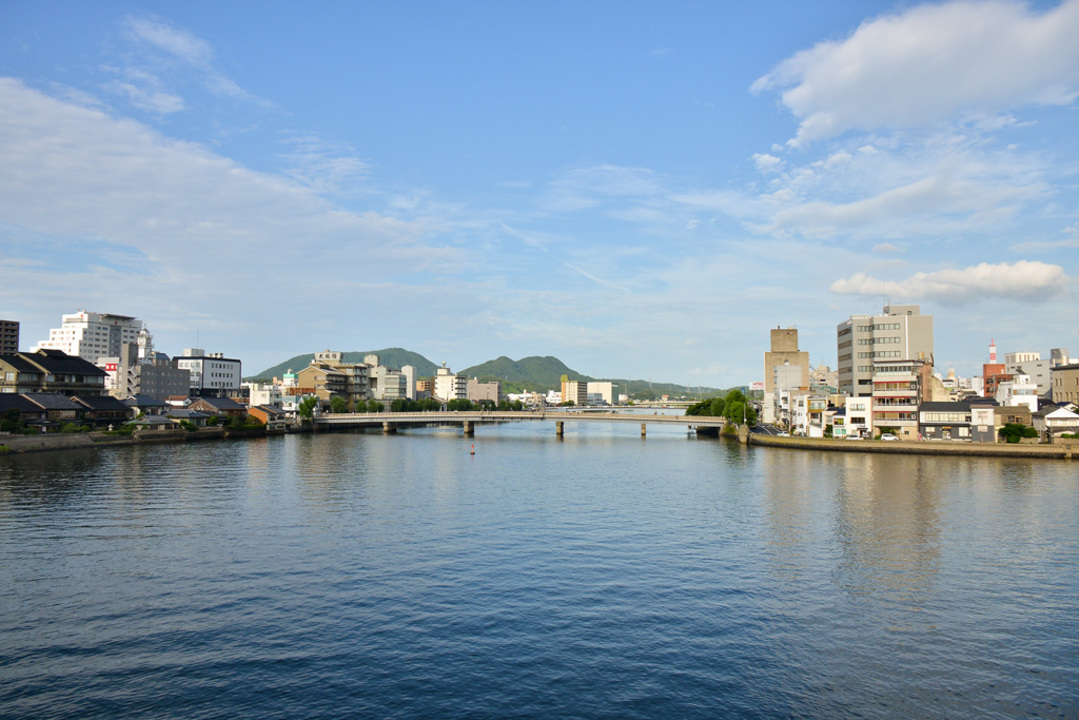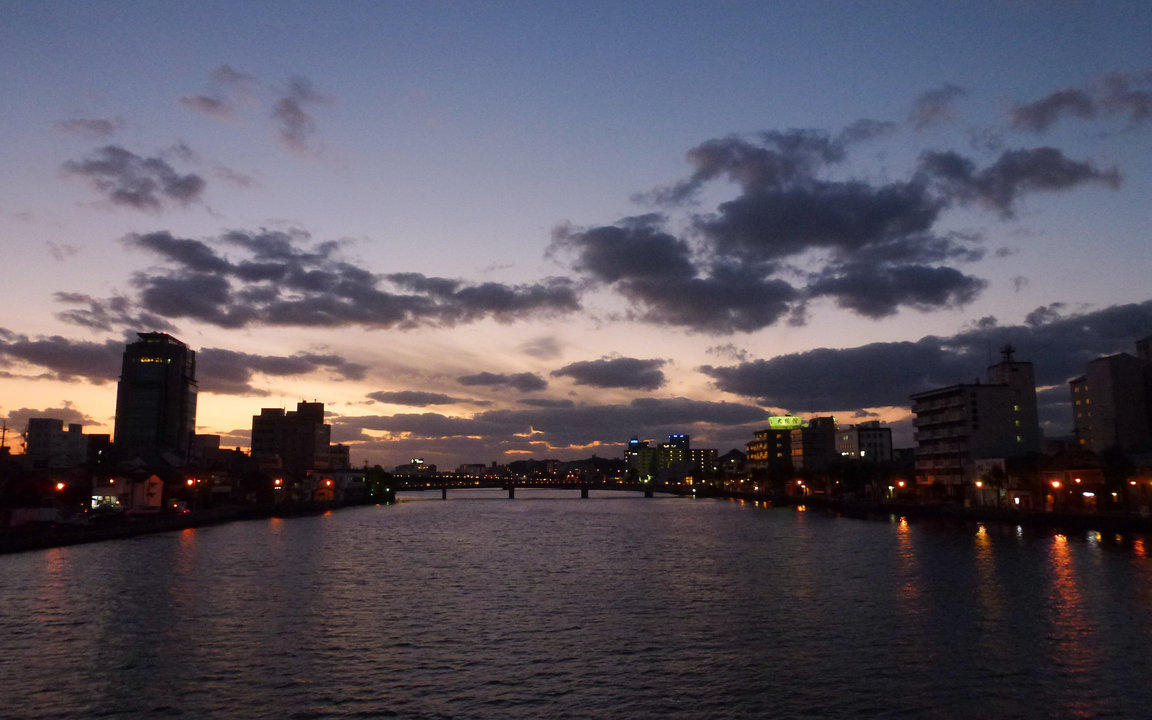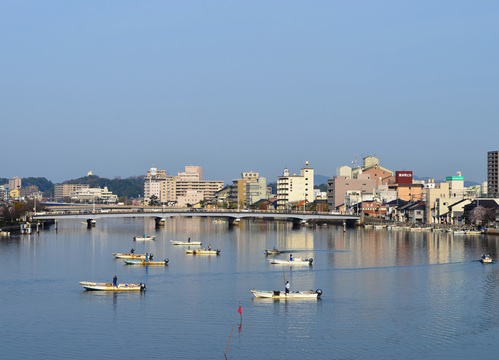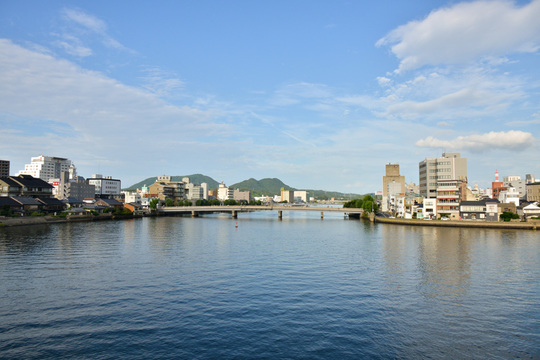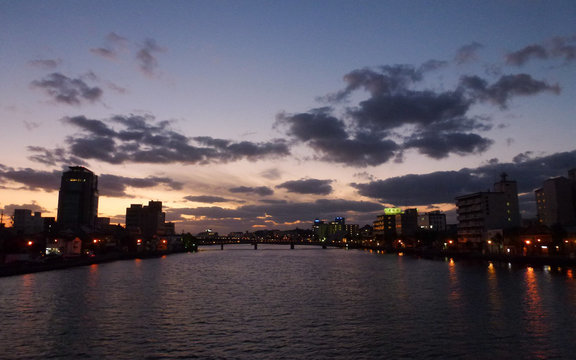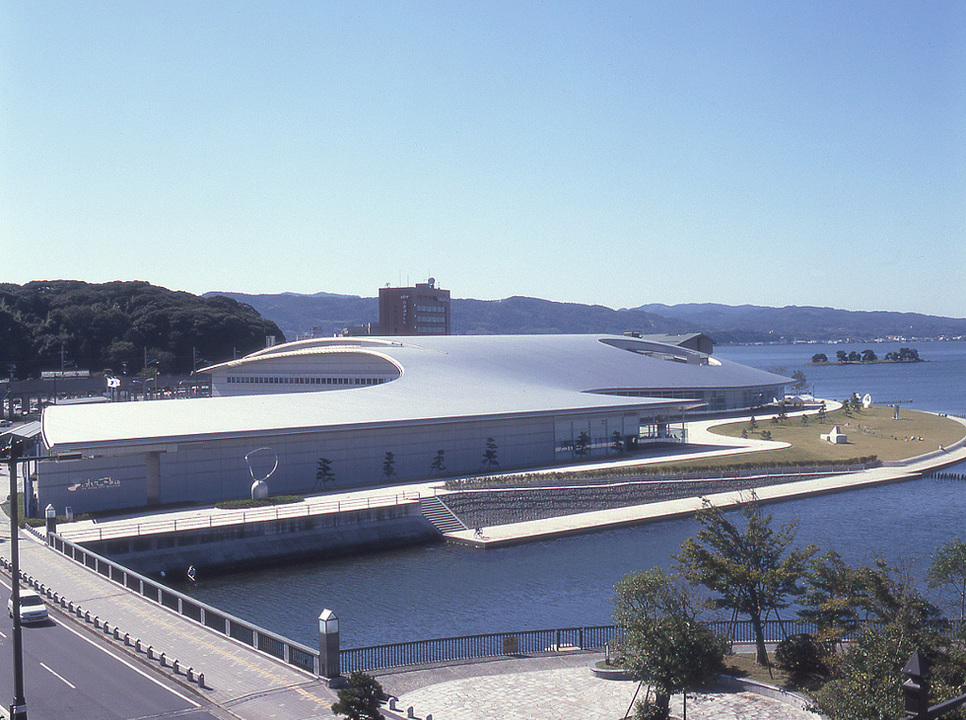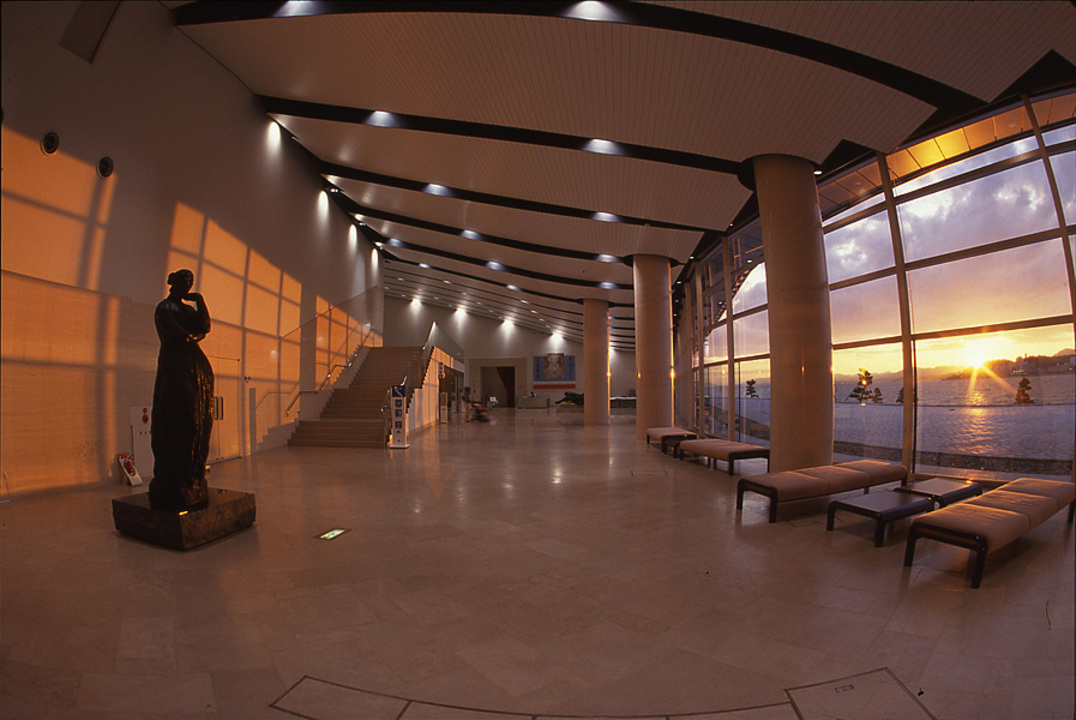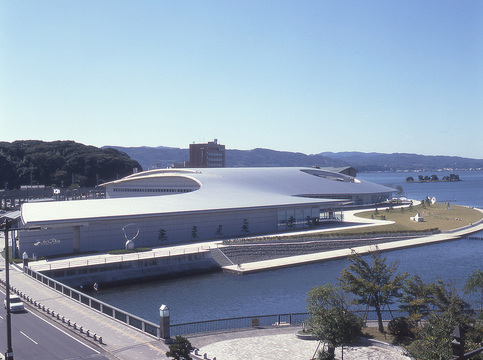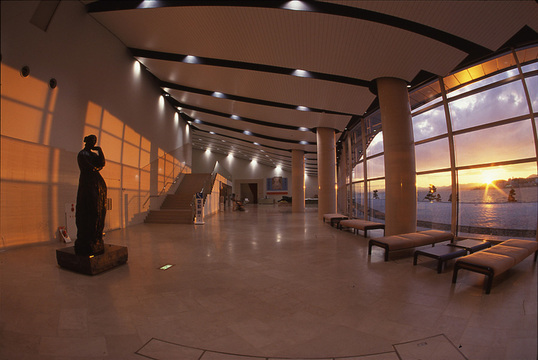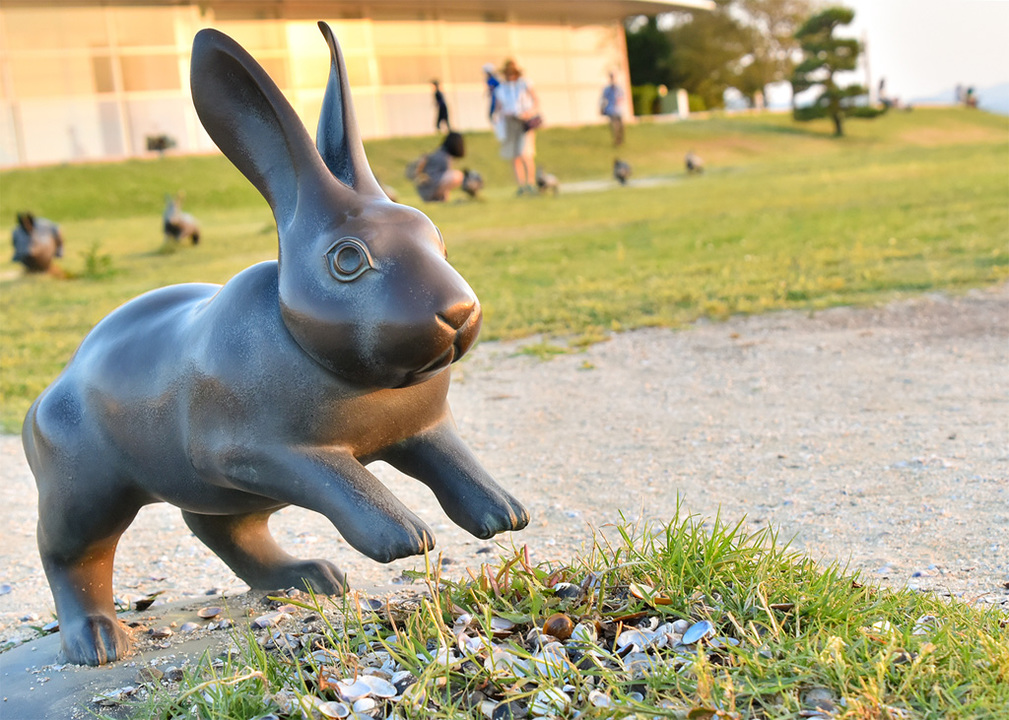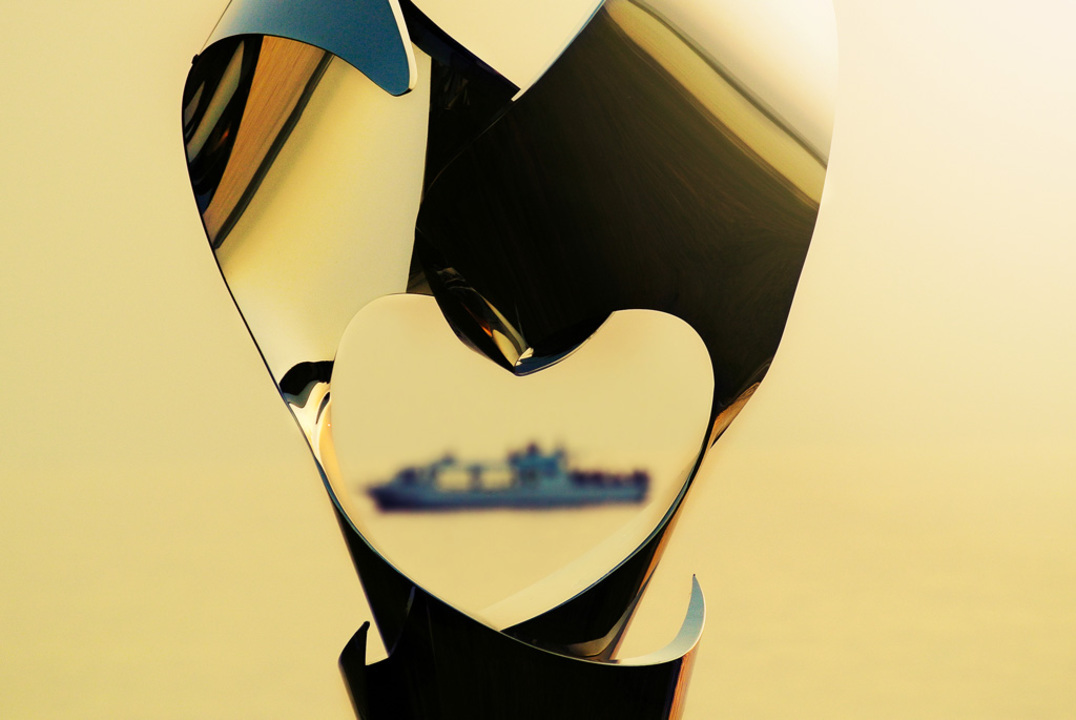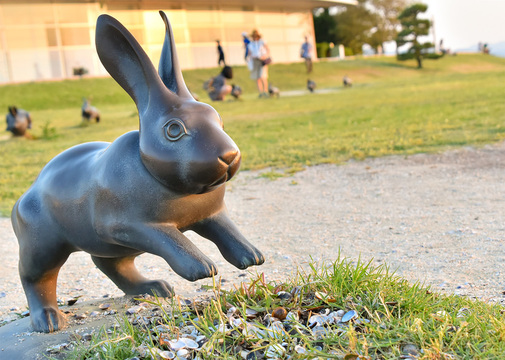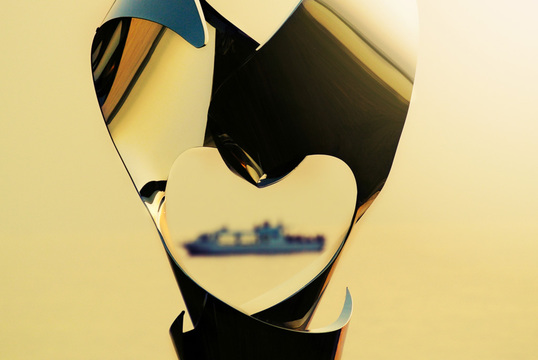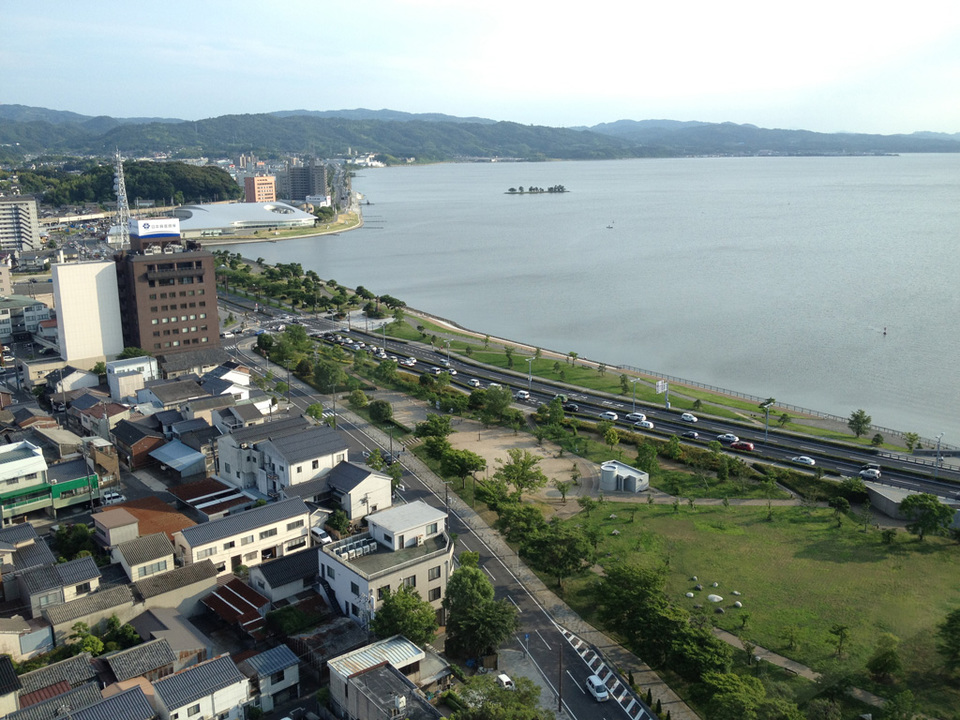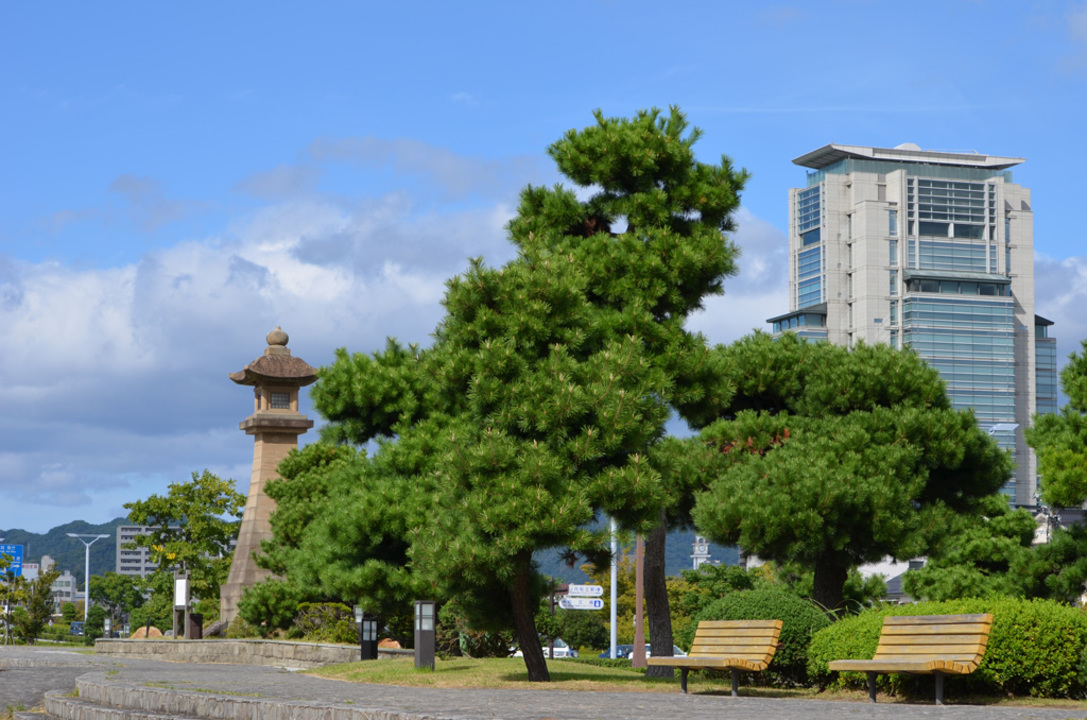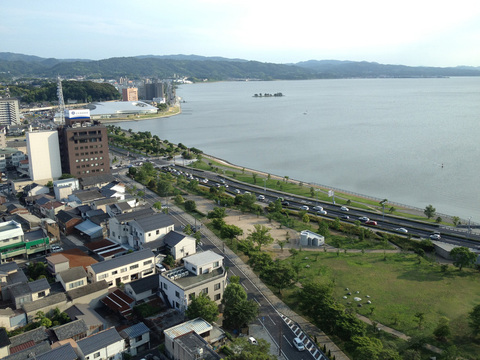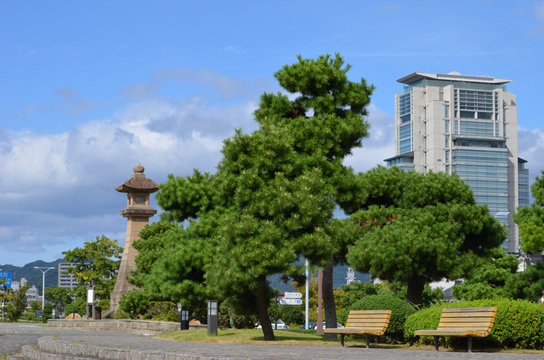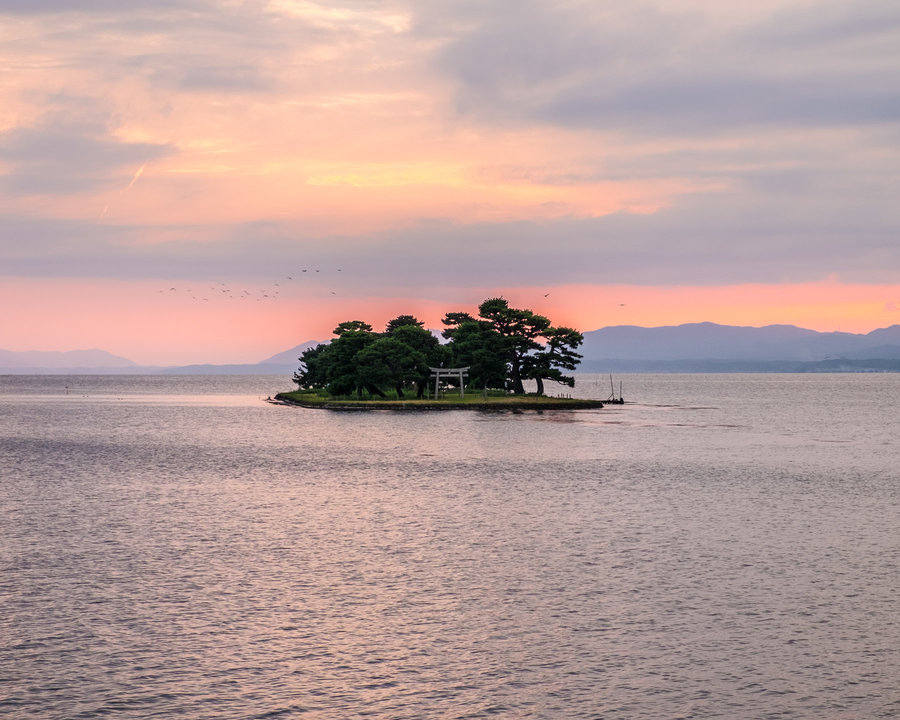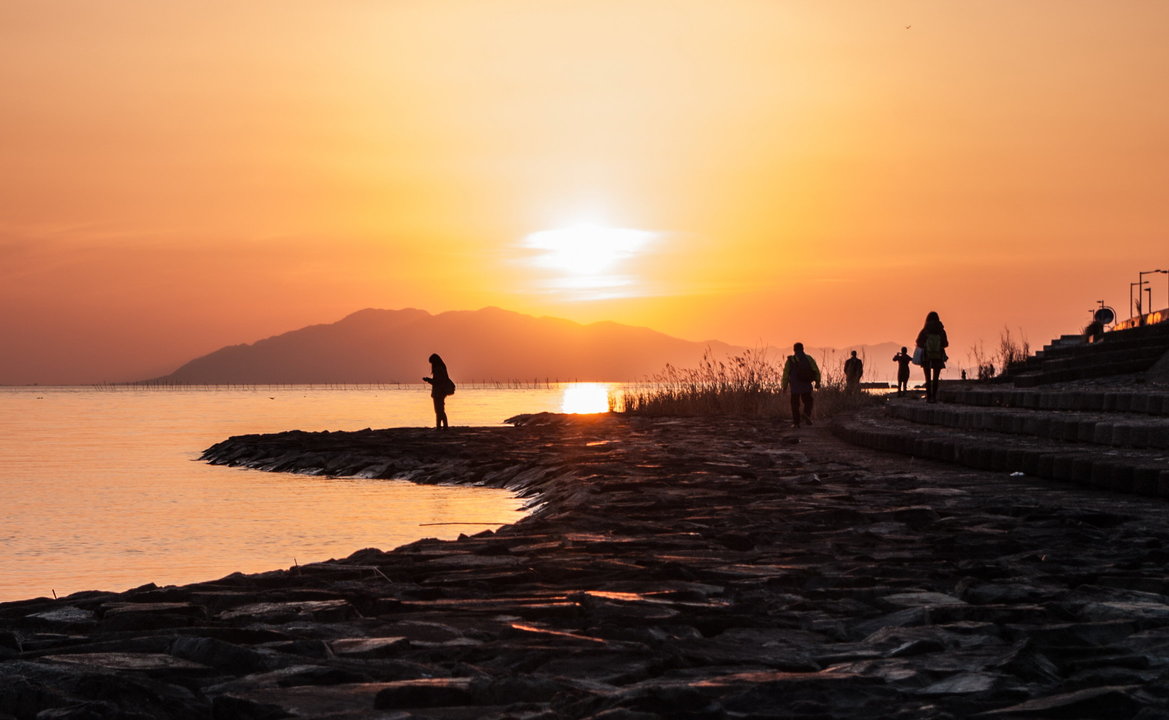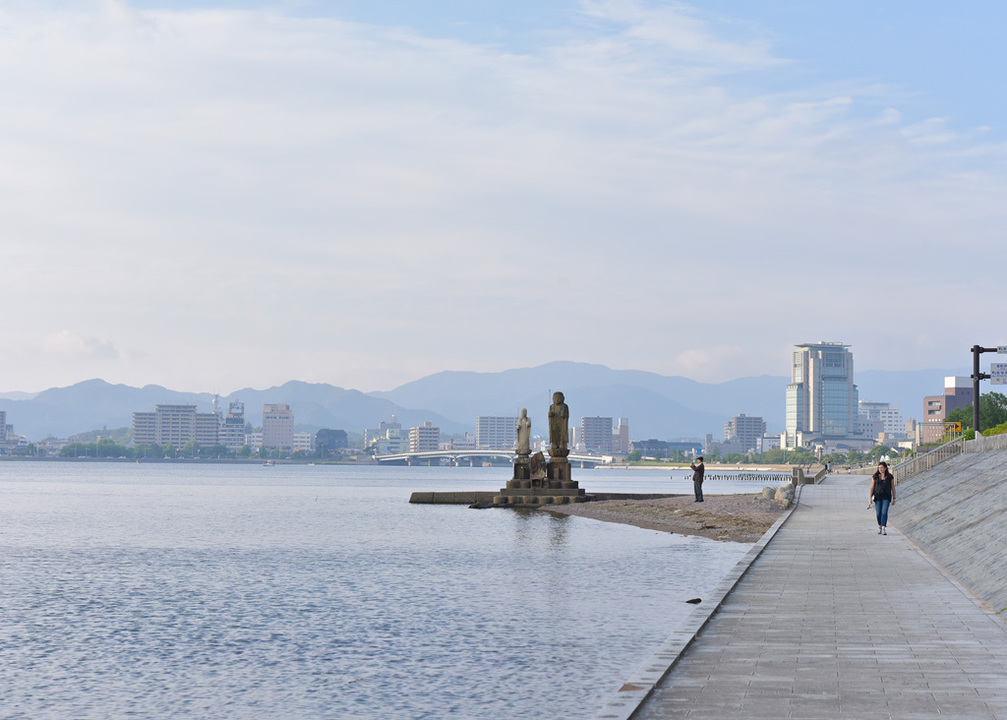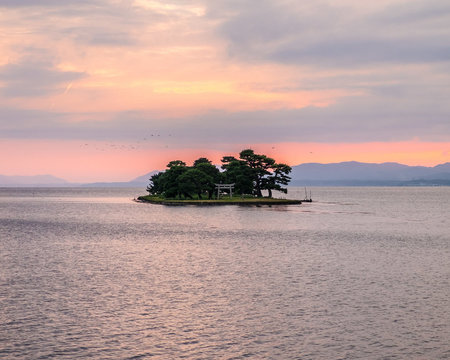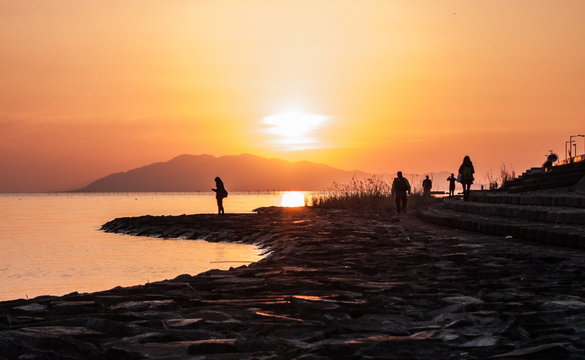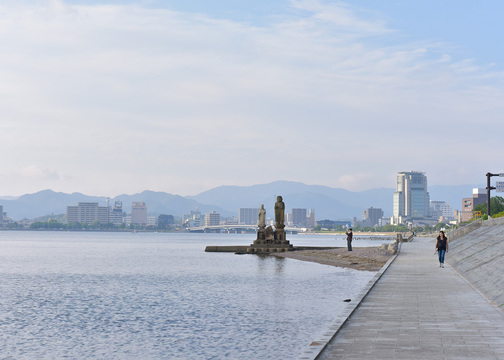South Side
Matsue Station Area
Matsue Station & Tourism Information Office – 松江駅・国際観光案内所
Matsue Station is located approximately one kilometre to the east of Lake Shinji, and two kilometres from Matsue Castle. Please note that JR Matsue Station and Ichibata Railway’s Matsue Shinjiko Onsen Station are serviced by different companies and not connected by railway, but you can get between them on foot or by bus [See Moving Around].
The Matsue tourism information office is located just outside the north exit of the station. There, you can find information on sightseeing and accommodation in the area [See Lodging], maps, pamphlets and newsletters as well as free Wi-Fi and computer access. Feel free to consult with the staff in English. Note that there are two more tourism information centres located within the castle grounds.
In the event of a disaster, you can charge smartphones/tablets at the International Tourism Information Office.
| Tourism Information Office Opening Hours |
9:00 - 18:00 daily |
|---|---|
| Tel | 0852-21-4034 |
| Fax | 0852-27-2598 |
Walk the streets of Matsue – 松江を歩く
One of the characteristics of the streets of Matsue lies in the physical layout of the town, which has not changed much over 400 years. Like the north side, there south side has many defensive features such as staggered junctions to hinder attacking armies. Many districts have kept their overall appearances, like the “temple town” of Teramachi – see below – or the “foot-soldier town” of Saikamachi, made up of narrow streets running from north to south like a Japanese chess board [See The founding of Matsue]. As you walk through the city, take time to appreciate the little signs illustrationing the town’s history!
Teramachi Temple Area – 寺町
When the town layout of Matsue was being planned over 400 years ago, this area was designated as “tera-machi”, i.e. temple town. Many temples were intentionally built there because they could easily be turned into mini strongholds in case of invasion, and thus fortify the approach to the castle. There are approximately 30 temples located in the vicinity, creating the perfect location to wander through the narrow streets and enjoy the temple architecture as you go. With its historic atmosphere, strolling through Teramachi is a good choice if you wish to travel from the station to northern Matsue via Ohashi Bridge. The civic centre (STIC Building) is also located in this area. There is a restaurant and café on the ground floor, and events are held here. South of Teramachi, on the Station Street (Eki-dori), don’t miss the Matsue Drum Display to learn more about one of the biggest events of the city, Matsue Do Drum Parade (“do-gyoretsu”).
Mefu Shrine and Shirakata Tenmangu Shrine – 賣布神社・白潟天満宮
Matsue is home to many old and important shrines. Among them, Mefu Shrine and Shirakata Tenmangu Shrine can be easily accessed on foot from Matsue Station. Mefu Shrine is located northwest of the station, just south of the Ohashi River. Believed to have been first constructed over 1000 years ago and worshipped by sailors for safety at sea, this shrine is home to impressive giant trees and has beautifully carved dragon figures on its walls.
Shirakata Tenmangu Shrine, located southwest of the station, is dedicated to Michizane Sugawara, who is known throughout Japan as the God of Learning. He is also known as Tenjin, and because the bull is an animal closely associated with him, there is a statue of one. Many local residents pay a visit to this shrine during school exams. Every year, on the 24th and 25th of July, the shrine holds the Tenjin-san Festival and the whole area comes alive with lively processions and food and game stalls.
Shirakata Tenmangu Shrine, located southwest of the station, is dedicated to Michizane Sugawara, who is known throughout Japan as the God of Learning. He is also known as Tenjin, and because the bull is an animal closely associated with him, there is a statue of one. Many local residents pay a visit to this shrine during school exams. Every year, on the 24th and 25th of July, the shrine holds the Tenjin-san Festival and the whole area comes alive with lively processions and food and game stalls.
| URL | http://tenjin-mikoshi.com/ (Only in Japanese) |
|---|
Ohashi River – 大橋川
The Ohashi River divides the north and south parts of Matsue, and connects Lake Shinji to the Sea of Japan via Lake Nakaumi. The river further permeates the city of Matsue through hundreds of canals and waterways, which were used as a means of transportation in the past.
The Ohashi River can be crossed on foot or by car using any of the four bridges, which are (from west to east), Shinjiko Ohashi Bridge (the largest one, over Lake Shinji), Matsue Ohashi Bridge (the oldest bridge of the city), Shin-Ohashi Bridge (by Mefu Shrine) and Kunibiki Ohashi Bridge (just northeast of Matsue Station). Each bridge offers a great view of the surrounding scenery, and are great spots to enjoy a view of the Shijimi clam fishing boats in the morning. Because of Matsue’s many waterways and boat tours, Matsue is sometimes referred to as the Venice of Japan.
The Ohashi River can be crossed on foot or by car using any of the four bridges, which are (from west to east), Shinjiko Ohashi Bridge (the largest one, over Lake Shinji), Matsue Ohashi Bridge (the oldest bridge of the city), Shin-Ohashi Bridge (by Mefu Shrine) and Kunibiki Ohashi Bridge (just northeast of Matsue Station). Each bridge offers a great view of the surrounding scenery, and are great spots to enjoy a view of the Shijimi clam fishing boats in the morning. Because of Matsue’s many waterways and boat tours, Matsue is sometimes referred to as the Venice of Japan.
Lake Shore
Shimane Art Museum – 島根県立美術館
This art museum opened in 1999 and was designed by Kiyonori Kikutake, a prominent Japanese architect known as one of the founders of the Japanese Metabolist (architectural movement) group. It was built to look like a painter’s palette, and looks also like the setting sun.
The art museum houses collections of western and Japanese paintings, print, sculptures, modern art, photography, and crafts. Situated on Lake Shinji’s shore, Shimane Art Museum is one of the best spots for enjoying the beautiful sunsets. The museum stays open an extra half-hour past sundown (Click here for Lake Shinji sunset forecasts) from March through September so visitors can enjoy the setting sun. Both the standard and special exhibitions change periodically, and free local exhibits are sometimes held.
Most of the works in this museum are by artists born in or closely connected to Shimane Prefecture. The museum displays a collection of ukiyo-e woodblock prints.
The art museum houses collections of western and Japanese paintings, print, sculptures, modern art, photography, and crafts. Situated on Lake Shinji’s shore, Shimane Art Museum is one of the best spots for enjoying the beautiful sunsets. The museum stays open an extra half-hour past sundown (Click here for Lake Shinji sunset forecasts) from March through September so visitors can enjoy the setting sun. Both the standard and special exhibitions change periodically, and free local exhibits are sometimes held.
Most of the works in this museum are by artists born in or closely connected to Shimane Prefecture. The museum displays a collection of ukiyo-e woodblock prints.
| Admission fee | Present a valid passport or Residence Card for 50% discount |
|---|---|
| Hours | Oct – Feb, 10:00 - 18:30 Mar – Sep, from 10:00 and until 30 minutes after sunset. Closed every Tuesday (except national holidays) and Dec. 28 - Jan. 01 |
| URL | http://www.shimane-art-museum.jp/en/ |
| Tel | 0852-55-4700 |
| Access | 15 minutes from JR Matsue Station on foot. 6 minutes from JR Matsue Station by Matsue City Bus Southern Inside Loop or Lake Line Bus. Get off at Kenritsu Bijutsukan-mae Bus Stop. 3 hours of free parking for cars. |
Sculptures by the lake – 宍道湖畔のオブジェ
There are a number of sculptures located in the park next to the art museum and along the lakeside promenade. Among them, twelve bronze rabbits appear to be running toward the shore. Known as the ‘Shinji-ko Rabbits’ and designed by Satoshi Yabuuchi (well-known for having created Sento-kun, mascot of Nara City). They are based on the legend of the White Hare, the hero of which is Okuninushi, the deity of Izumo Taisha Grand Shrine. It has become popular to rub the rabbit second from the front for good luck, and to place Shijimi clams before him for even more!
Another sculpture by the art museum is the ‘Wind Gate’, which was built by Kiichi Sumikawa, one of the design supervisors of Tokyo Sky tree – the tallest free-standing structure in the world. A steel looking sculpture that forms a heart shape when viewed from the right direction facing out towards the lake is a monument to the writer Lafcadio Hearn [See Matsue, Home of Lafcadio Hearn].
There is a pleasant walkway all the way from Shinjiko Ohashi Bridge (where the lake feeds into the river), past Shimane Art Museum along the lake shore, and leading to the sunset viewing spot. The morning, noon, and evening views of Lake Shinji are all worth a visit, and the lake’s close proximity to central Matsue makes this easy for those staying overnight in the city.
Lafcadio Hearn wrote of the view of the lake: “Long reaches of faintly-tinted vapour cloud the far lake verge, — long nebulous bands, such as you may have seen in old Japanese picture books.” [More info on Lake Shinji]
Another sculpture by the art museum is the ‘Wind Gate’, which was built by Kiichi Sumikawa, one of the design supervisors of Tokyo Sky tree – the tallest free-standing structure in the world. A steel looking sculpture that forms a heart shape when viewed from the right direction facing out towards the lake is a monument to the writer Lafcadio Hearn [See Matsue, Home of Lafcadio Hearn].
There is a pleasant walkway all the way from Shinjiko Ohashi Bridge (where the lake feeds into the river), past Shimane Art Museum along the lake shore, and leading to the sunset viewing spot. The morning, noon, and evening views of Lake Shinji are all worth a visit, and the lake’s close proximity to central Matsue makes this easy for those staying overnight in the city.
Lafcadio Hearn wrote of the view of the lake: “Long reaches of faintly-tinted vapour cloud the far lake verge, — long nebulous bands, such as you may have seen in old Japanese picture books.” [More info on Lake Shinji]
Shirakata Park and Observation Floor – 白潟公園
Located by Lake Shinji, Shirakata Park is lined with a promenade and steps where you can sit and enjoy the view of the lake. There are also benches, pine trees, and grass area. The most prominent point of this park is probably the large stone lantern. The lantern is made from Kimachi stone, a locally sourced stone, and stands six metres tall. It is now a well-known landmark in Matsue.
From Shirakata Park, you can easily reach Matsue’s highest building, the Sanin-Godo Bank Headquarters, which has an observatory floor (65 metres) offering a panoramic view of Matsue City, including a view out over the lake. Entrance is free, but times are limited to 10:00 to 18:00 (November to March, 9:30 to 17:30). Closed on weekends.
From Shirakata Park, you can easily reach Matsue’s highest building, the Sanin-Godo Bank Headquarters, which has an observatory floor (65 metres) offering a panoramic view of Matsue City, including a view out over the lake. Entrance is free, but times are limited to 10:00 to 18:00 (November to March, 9:30 to 17:30). Closed on weekends.
View of Lake Shinji – 宍道湖の景色
There is a pleasant walkway all the way from Shinjiko Ohashi Bridge (bridge where river enters lake) past Shimane Art Museum along the lake shore, leading to the sunset viewing spot. The morning, noon, and evening views of Lake Shinji are all worth a visit, and the lake’s close proximity to central Matsue makes this easy for those staying overnight in the city.
Lafcadio Hearn wrote of the view of the Lake: “Long reaches of faintly-tinted vapour cloud the far lake verge, — long nebulous bands, such as you may have seen in old Japanese picture books.” [More info on Lake Shinji]
Lafcadio Hearn wrote of the view of the Lake: “Long reaches of faintly-tinted vapour cloud the far lake verge, — long nebulous bands, such as you may have seen in old Japanese picture books.” [More info on Lake Shinji]
